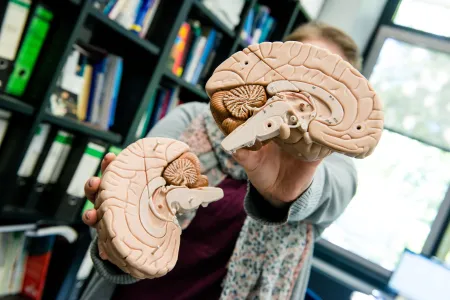
Neurophilosophy
How is it possible to remember selfless experiences?
People who practice intensive meditation report memories of states in which their sense of self dissolves. Is this at all possible?
Psychoactive substances or meditation can trigger an experience that the self dissolves and is no longer present. The philosophers Dr. Raphael Millière from Columbia University New York and Professor Albert Newen from Ruhr-Universität Bochum have analysed whether accounts of memories of such experiences should be taken seriously. They conclude that selfless memories are possible. Their reasoning is outlined in the journal “Erkenntnis”, published online on 12 May 2022.
“Without such experiences, we can’t imagine what it means when the self dissolves,” says Albert Newen. The question he asked together with Raphael Millière was: “Aren’t memories better interpreted as a reconstruction in retrospect, which misjudges the the original experience?” In our everyday consciousness, the self is always present. When you reach for a car key, you implicitly feel that you are the agent and that it is your own arm that makes the movement. When you look at something, you experience yourself at the centre of the visual perspective.
Indications of the existence of selfless experiences
Individuals with neurological impairments, for example as a result of strokes, are known to have impaired facets of this self-perception. “Also, neural processing is known to change considerably during meditation,” say Newen and Millière. “Accordingly, we should acknowledge that experiences do exist that lack any facet of the self.” But even so, it remains doubtful whether people can remember them, as Newen explains: “If a person describes a memory of a selfless experience, they are in a state of self-consciousness while remembering – and how can they remember an episode if they weren’t aware of themselves during the original experience?”
Explanation based on the Bochum model of memory
The Bochum model of memory, which is being developed in research group 2812, is based on the assumption that people construct a scenario when they remember. The process starts with the activation of a memory trace in which core parts of the experience are stored. The memory trace is then enriched with background knowledge, resulting in the construction of a vivid memory of an experienced event. Moreover, people usually add two self-facets in the construction: They register that it is themselves who are involved in the scene and that the memory is their own. Researchers speak of self-involvement and mineness of memory.
Newen and Millière argue that self-involvement and mineness must, however, be separate aspects. This is because some patients describe having been involved in an episode (“I remember the scene where I did something”) without feeling the memory as belonging to themselves – the mineness of the memory is lacking. The two self-facets added in the construction can be missing from the original memory and only emerge during the construction process. Even if the original experience didn’t contain any facets of the self and is deposited in the memory trace without any such facets, facets of the self can still be included in the construction. Consequently, a memory of selfless experiences and the accounts of such experiences should be taken seriously.
